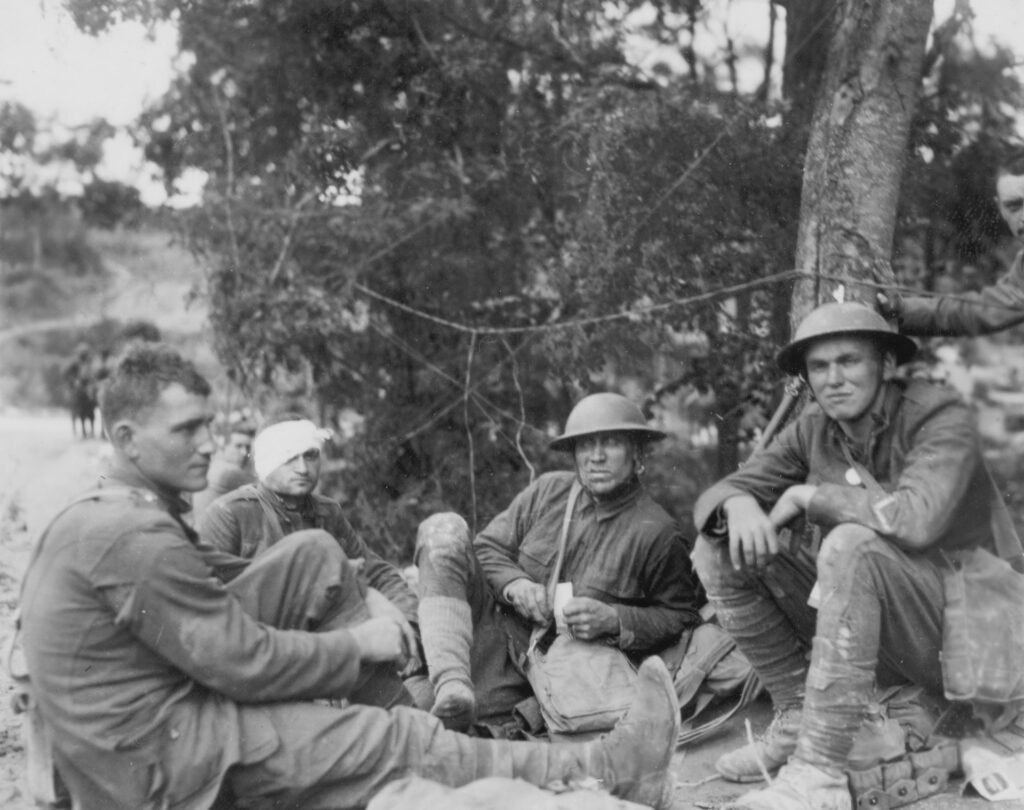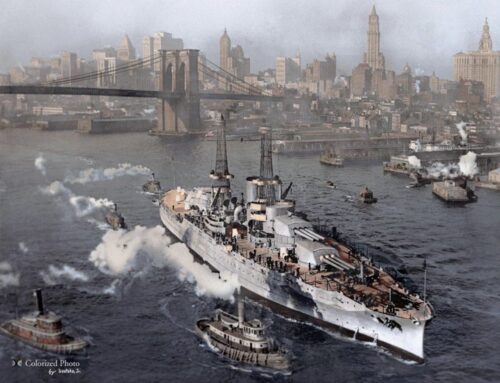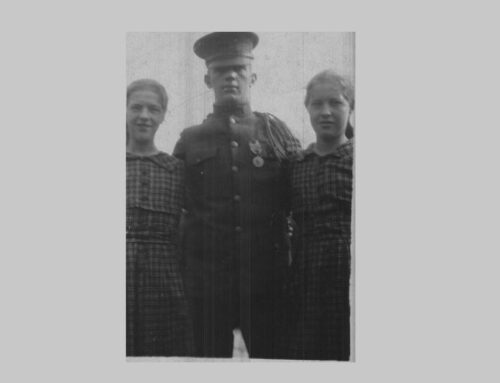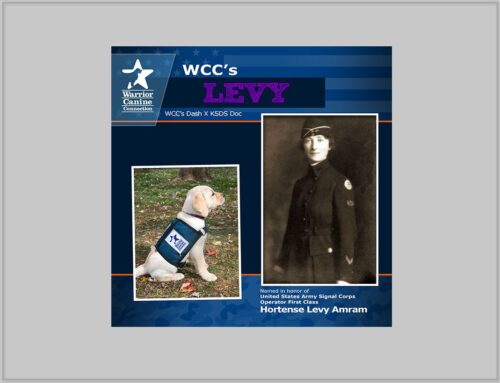The Doughboy in the Garage Sale: How Sacred Artifacts End Up on Folding Tables
Published: 16 April 2025
By Mark Dimitri
Special to the Doughboy Foundation website

The Doughboy in the Garage Sale How Sacred Artifacts End Up on Folding Tables (1)
Imagine a folding table sitting under a pop-up canopy in a driveway somewhere in Indiana. On it, between a box of kitchen tools and a plastic snowman, lies a bayonet. Rusted a bit. Wrapped in a yellowing cloth that was once white. It’s real, though. A WWI artifact. And someone, maybe even the person selling it, doesn’t know where it came from – only that it’s been in the attic, or basement or a box marked “Dad’s stuff.” The question isn’t just how it got there. It’s why and exactly how sacred artifacts end up on folding tables at all. That question doesn’t have a single answer. But the path from sacred to surplus usually involves misplacement, misremembering, and the plain fact that people die.
The Family Chain
Start with Private Ellis Grant (our fictional hero representing your average US soldier in WWI). He was back from France in 1919 with a silver cross he found in the ruins of a cathedral and a German helmet that still had a bullet hole in it. Both survived the return trip in a canvas duffle bag. The cross went into a drawer. The helmet went on a bookshelf.
Ellis married, had two daughters, then two sons. He lived to see a man on the moon and didn’t like to talk about war. When he died, his belongings were passed to his son, Harold, who didn’t care for helmets but kept the cross in a box. Years passed. Harold moved twice, then once more after his wife died. He remarried, but his stepchildren had no interest in boxes that smelled like mold. Eventually, someone cleaned out a storage unit. This is the handoff. The moment when, unfortunately, real history becomes clutter.
The Value Gap
Something happens when ownership passes without explanation. That helmet might have saved Ellis from shrapnel. But his grandson sees it as this weird old thing. There’s no inscription. No label. Only rust. Museums keep records. Families keep shoeboxes.
Without a story, there is no value. At least, not the kind that stops someone from tossing a century-old medal into the “free bin.” This doesn’t happen from cruelty. It happens from a distance. A war fought by a boy you never met, in a place you’ve never been, during a time that only exists in black-and-white footage, is a bit hard to keep sacred. However, we should try our best to preserve its importance and weight.

Though over a century has passed since WWI, we should still do our part to preserve its memory – because forgetting is easier than we think.
Cataloging the Wrong Way
Sometimes, the people trying to preserve history speed up its erasure. Consider estate sales. A team of organizers moves through a home with gloves and labels. They identify valuables, assess the furniture, and toss the rest into “miscellaneous.” That’s where the artifacts often go.
It’s not that they don’t care. It’s that the item doesn’t scream “important.” A bayonet in a kitchen drawer is just a sharp object. A wooden pipe is just a pipe. The past doesn’t announce itself loudly. You have to be tuned into the quiet frequency.
And many (or most?) people aren’t.
So the box gets packed. The table gets set up. And another sacred object joins the lineup.
A Short Trip Through Washington, DC
Walk through Washington, DC, and you’ll see plenty of sacred things on display. Uniforms in glass cases. Bent medals. Shoes with holes. Each item has a label. Each label has a date. And if you have the time, or if you’ve recently moved there, you can get to know the city through its commitment to memory. It’s one of the quiet things you need to know about living in Washington DC. But what’s not on display are the other artifacts – the ones that didn’t make it.
For every object in the National Museum, there are thousands in personal closets. And for every curated exhibit, there’s a folding table two hours away holding something someone once carried through the mud.
The contrast is sharp. It’s not about preservation skills. It’s about intention. One space protects. The other forgets.
And both are part of the same story.
How They Travel
Objects move. That’s the constant. Sometimes they move through inheritance. Other times through debt, divorce, or disinterest. A sacred artifact might be sold to a collector who gets sick and whose nephew, because of this or that, sells the collection out of desperation.
Or maybe the item gets donated to a church that doesn’t know what to do with it. It sits in a box behind hymnals. Eventually, the church holds a fundraiser. Out it comes, next to a ceramic duck.
This is how sacred artifacts end up on folding tables. Not with a bang, but through layers of small decisions, slow forgetting, and silent changes in what people consider meaningful.
The Seller’s Perspective
Sometimes, the person laying out the items knows exactly what they’re handling. They just don’t know what to do with it.
Take Marlene (another fictional character of ours). She’s 82. Her husband, Ed, collected WWI pins. Hundreds of them. She kept the collection after he passed, but they’ve been boxed up for a decade. Her knees hurt. She wants less stuff. She needs space more than stories.
So she puts them out. Priced at a dollar each.
To her, it’s not a disrespect. It’s decluttering. She tells a neighbor that Ed would have understood. Maybe he would have. Maybe not.
The Buyer’s View
Now comes the picker. Someone walks up, spots the trench periscope, and knows exactly what it is. Their heart skips. They ask, calmly, “How much for this old thing?”
“Three bucks,” says Marlene.
And just like that, the artifact changes hands again.
The buyer might keep it. Or sell it on eBay. Or donate it to a WWI museum. No one knows. The folding table doesn’t keep records.
But for a moment, the past re-enters circulation. The object is seen again. And maybe someone looks up trench warfare later that night.
From Sacred to Sale
So much of history moves through private spaces before it ever makes it into public ones. Most never make the jump. And that’s why sacred artifacts end up on folding tables – because time thins the story, and space demands compromise. But there’s still a strange hope to it. Every folding table holds the chance that someone, somewhere, will look twice. Will ask a question. Will remember something they didn’t know they knew.
Mark Dimitri is a garage sale enthusiast and amateur historian with a soft spot for forgotten relics. A father of three curious boys, he spends his weekends hunting for lost stories in suburban driveways, tracing the quiet journeys of various artifacts.
External Web Site Notice: This page contains information directly presented from an external source. The terms and conditions of this page may not be the same as those of this website. Click here to read the full disclaimer notice for external web sites. Thank you.



